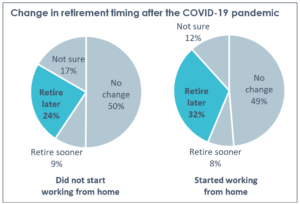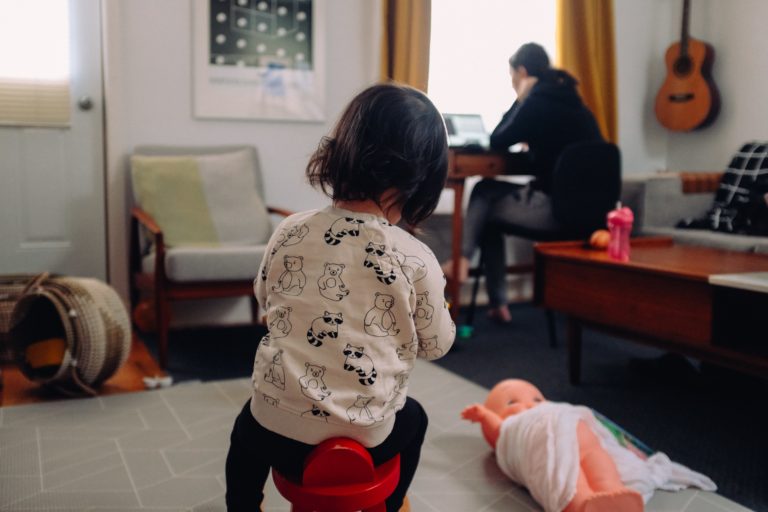Lifetime Income Life Insurance: Opportunity for a Superior Life Insurance Solution
by Mathew Greenwald
Greenwald Research, working with actuary Chuck Preti of Life and Annuity Solutions, has identified a new, and we think, highly attractive life insurance concept that, to our knowledge, is not currently available. This new concept not only does a better job of meeting many people’s needs, it can also have significant market appeal. Further, besides providing a crucial death protection benefit in a highly efficient way, this concept can also provide an important component to retirement planning and financial security in retirement.
We surveyed 504 people ages 20-50 who have a spouse and/or child and personal income of at least $40,000 per year, starting by comparing the appeal of traditional term insurance with income term insurance. Traditional term insurance is very common in the marketplace, while income term insurance, which can be defined to provide income until a specified and pre-definable date, is available from only a few companies. (It is not the new concept we will soon describe.) We asked respondents how appealing they found an income term policy that paid an immediate death benefit of $25,000 and then $3,000 a month to the beneficiary for a set period, depending on the age of the insured. We also asked how appealing they found a traditional term insurance policy that paid a lump sum death benefit of $250,000. The cost of the income term and traditional term policies, according to an analysis by the actuarial firm Life and Annuity Solutions, is similar.
Our research showed that more people found income term to be appealing than found traditional term insurance. When compared directly, 37% preferred Income Term Life and 24% preferred Traditional Term Life. This survey demonstrated to us the appeal of life insurance which made monthly payments.
Then our survey asked what type of income term the respondents preferred:
- A policy that would pay $2,000 a month from the day the insured dies to the point the insured would have reached 70, OR
- A policy that would pay $2,000 a month from the day the insured dies to the time the beneficiary dies
Even though the description of the lifetime payment option specified that no payments would be made if the beneficiary died before the insured, there was a strong preference for the policy that made monthly payments for the life of the beneficiary. Indeed, 46% preferred that policy and only 29% preferred the policy that would pay monthly income until the insured would have reached age 70. I will call a policy which makes a small immediate death benefit and then makes payments for the life of the beneficiary Lifetime Income Life Insurance.
It is clear why lifetime income is preferable: it provides the most financial security to the beneficiary and is the most financially and psychologically satisfying. Furthermore, in many cases, this coverage can be less costly than a policy that just pays benefits for a period of time. I believe this type of policy, once offered, can be highly marketable. This is the new concept we consider so promising.
The advantages of Lifetime Income Life Insurance over traditional life insurance are:
- It is easy to decide how much coverage to buy. The main purpose of life insurance is to provide enough to meet monthly income needs. But it is difficult to calculate exactly how much of a lump sum will be necessary for this, especially since some of this might depend on unpredictable investment returns on the lump sum. With Lifetime Income Life Insurance, the amount needed monthly can be directly purchased.
- The coverage is always up to date. With life insurance that provides a lump sum, the amount necessary to meet monthly income needs at purchase is more than what is needed 10 or more years later. That means that after just a little while too much is being spent on premium if the coverage is adequate at time of purchase. With Lifetime Income Life Insurance, the amount of income replaced is always correct.
- The proceeds cannot be over-spent or mis-invested.
- The policy has enormous flexibility. Lifetime Income Life Insurance offers consumers the choice of designing a product that gives them options for the size of the immediate death benefit, whether the monthly payments are adjusted for inflation, changing the amount of the monthly payments after a certain age or other markers, and the possibility of a death benefit for the beneficiary. This flexibility makes customization of the policy much more feasible than with traditional life insurance, a feature that consumers value.
Lifetime Income Life Insurance can be used as a more effective pension maximization product. A person who is retiring with a pension benefit must choose payments just either single life benefits or joint and survivor benefits. The advantage of joint and survivor payments is clear, but that often requires a substantial drop in the amount of lifetime income the pension will provide. An actuarial analysis reveals that it would often be advantageous for a retiring worker, especially one in reasonable health, to take the single life coverage and buy lifetime income life insurance that would continue payments to the spouse at whatever level the pensioner decided was appropriate if the pensioner died first. While it is unclear how much traditional life insurance a person seeking pension maximization should get, with Lifetime Income Life Insurance, they can decide exactly how much income the survivor would need.
Due to breakthroughs in life insurance underwriting, there are ways of making Lifetime Income Life Insurance significantly better in many situations. Underwriting has become, in many circumstances, very quick and inexpensive. This makes it feasible to underwrite both the insured and the beneficiary, which can permit, in a number of cases, providing more coverage for the same premium. This can make the coverage much better in situations in which the beneficiary is older and/or has impaired health, (a scenario especially likely for men who tend to marry younger women.) This is especially true in circumstances in which the impaired person cannot work and is completely dependent upon the insured.
Consider the following situation: a 45-year-old woman who is working and supporting her 55-year-old husband who got sick and had to leave the workforce. Assuming the man is rated a “Table 8,” (an actuarial rating indicating a lower than average life expectancy) if she is in good health, she could get a Lifetime Income Life Insurance policy that paid her husband $46,027 a year for life for the cost of a traditional policy that paid a lump sum death benefit of just $100,000.[1] Which policy do you think would be better for a 55-year-old man: $100,000 or $46,027 a year for life?
If the woman is age 55 and the husband is age 65 and rated “Table 8,” the annual payout for life would be $82,214. There are many women who are married to men who are older and in poorer health than they are. The husband is often very dependent on the wife for needed income. Life insurance is essential. This policy provides it in a superior way.
Also, consider a young mother or father who just gave birth to a significantly impaired “special needs” child. The child will never be able to support himself or herself. The mother, for example, could have a life expectancy of 50 years. The child could have a life expectancy of 30 years. The child will need income for life if the parents die. But many special needs children would be unable to manage the money. A policy that provides Lifetime income life insurance is the perfect solution. It provides monthly income that would not have to be managed. Very importantly, it would provide lifetime income at a sufficient level for the child from day one at a much lower cost than traditional life insurance.
Use of Lifetime Income Life Insurance
We believe there are a number of potential applications of Lifetime Income Life Insurance. It is certainly superior, as indicated above, in many specific circumstances. It also may be effective in the direct marketing and voluntary markets. In the individual market, beyond the cases when it is clearly the superior choice, it will often, we believe, be effective, as the lead recommendation. However, we think it can also be helpful as a fall back recommendation if a prospect has trouble deciding how much coverage to get or balks at the cost of coverage.
Suggested Next Steps
Our research just covered the basic design of Lifetime Income Life Insurance. There is potential to make this solution even more appealing through features such as a death benefit for the beneficiary, return of premium, the guarantee of a certain level of payout, and transformation of the coverage to long term care insurance. Designing the most effective policy will require product development research. If you are interested in discussing product development efforts or want more information about the survey we conducted, contact us.
[1] Calculations made by the actuarial firm Life and Annuity Solutions.

















